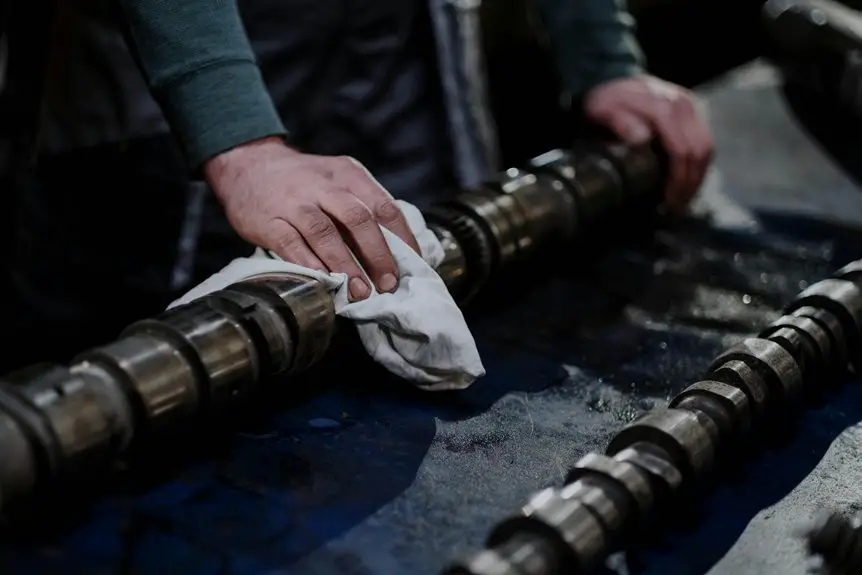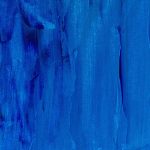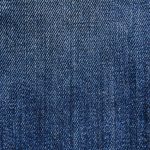To repair your velour fabric, start by gently cleaning and inspecting the damaged area. For small snags, use a fine needle to pull fibers back into place and lightly brush the pile. For holes or tears, choose matching thread or fabric patches and sew carefully with invisible stitches or apply fabric glue for quick fixes. Always handle velour gently to avoid further damage. If you want to learn how to restore worn areas and prevent future issues, there’s more to explore.
Table of Contents
Key Takeaways
- Clean and air dry the velour fabric thoroughly before starting any repair to ensure dirt doesn’t interfere with adhesion or stitching.
- For small snags, gently pull loose fibers back into place from the underside using a fine needle and smooth the surface.
- Use fabric glue carefully for minor tears or loose fibers, applying a small amount on the underside and letting it dry fully.
- Stitch larger tears with a fine needle and matching thread using ladder or invisible stitches from the fabric’s underside for discreet mending.
- After repair, brush the fabric gently with a soft brush to restore the pile and maintain the velour’s plush texture.
Identifying Common Types of Velour Damage
Velour fabric can suffer from several common types of damage that you’ll want to recognize before starting repairs.
The first is piling, where small balls of fiber form on the surface, making the fabric look worn.
Piling occurs when tiny fiber balls form on velour, giving it a worn, aged appearance.
Next, you might notice tears or holes, often caused by snagging or sharp objects.
Fading and discoloration can also occur, especially if the fabric’s been exposed to sunlight over time.
Stains are another frequent issue, and because velour is plush, they can be tricky to remove.
Finally, flattening or matting of the pile happens with heavy use, causing the fabric to lose its soft texture.
Identifying these problems early helps you choose the right repair method and keep your velour looking its best.
Tools and Materials Needed for Velour Repair
To repair velour fabric effectively, you’ll need a few essential tools like sharp scissors and a needle.
Choosing the right fabric materials and matching adhesives or thread is vital for a seamless fix.
Let’s go over what you’ll need to get started.
Essential Repair Tools
Gathering the right tools is essential for a successful velour fabric repair. You’ll want items that help you work delicately yet efficiently on this soft, plush material. Here’s a quick guide to the essential tools you should have on hand:
| Tool | Purpose | Tip |
|---|---|---|
| Needle | Stitching tears | Use fine, sharp needles |
| Thread | Matching color stitching | Choose polyester thread |
| Scissors | Trimming frayed edges | Use sharp, small scissors |
| Tweezers | Positioning fabric fibers | Helps with precision |
| Fabric glue | Securing small patches | Opt for flexible glue |
Having these tools ready guarantees you can handle repairs smoothly without damaging the delicate velour texture.
Recommended Fabric Materials
Choosing the right fabric materials plays an essential role in achieving seamless repairs on velour. You’ll want to find a fabric that closely matches the texture, weight, and color of your velour piece.
Look for velour or velvet scraps that blend well with your original fabric. If an exact match isn’t available, consider using a similar pile fabric with a soft, plush feel. Cotton or polyester blends often work best because they mimic velour’s stretch and sheen.
Avoid coarse or stiff fabrics, as they’ll stand out and affect the repair’s durability. Having a small piece of the original fabric, if possible, helps you match fibers and weave accurately. This guarantees your repair looks natural and lasts longer without drawing unwanted attention.
Adhesives and Thread Choices
Matching your fabric is just one part of a successful velour repair; selecting the right adhesives and thread will guarantee your fix holds up over time. You’ll want adhesives that are flexible and fabric-safe, avoiding anything that stiffens or damages the pile. For thread, choose a strong polyester or nylon that matches your fabric color closely to keep stitches discreet and durable. Below is a quick guide:
| Adhesive Type | Best Use | Notes |
|---|---|---|
| Fabric Glue | Small tears or edges | Flexible, dries clear |
| Fusible Webbing | Larger patches | Requires heat, strong bond |
| Polyester Thread | Hand or machine stitching | Durable, good color match |
| Nylon Thread | Heavy-duty repairs | Slightly elastic, strong hold |
Select materials carefully to guarantee a neat, lasting repair on your velour.
Preparing the Velour Fabric for Repair
Before you start repairing, make sure to clean the velour fabric thoroughly to remove dirt and oils.
Take a close look at the damaged areas to understand the extent of the repair needed.
This preparation will help you achieve the best results.
Cleaning the Fabric
Anyone planning to repair velour fabric should start by thoroughly cleaning it to remove dirt, oils, and stains that can hinder the repair process.
Begin by gently vacuuming the fabric with a soft brush attachment to lift loose debris without damaging the pile. Next, spot-clean any visible stains using a mild detergent mixed with water; apply the solution with a clean cloth, dabbing rather than rubbing to avoid crushing the fabric’s texture.
For overall cleaning, use a damp cloth and mild soap, carefully wiping in the direction of the nap. Avoid soaking the fabric, as excess moisture can cause shrinkage or distortion.
Once cleaned, let the velour air dry completely in a well-ventilated area before moving on to repairs. This guarantees a clean, stable surface for better results.
Inspecting Damage Areas
Once you’ve cleaned the velour fabric thoroughly, carefully inspect the damaged areas to identify the type and extent of wear.
Look for tears, holes, thinning, or crushed pile. Run your fingers gently over the surface to feel for rough patches or stiff spots. Use a bright light or natural sunlight to spot color fading or stains that might affect the repair.
Take note if the damage is localized or spread out, as this will influence your repair technique. Pay attention to the fabric’s nap direction near damaged spots, as aligning repairs with the pile is essential for a seamless finish.
Document your findings so you can plan your approach accurately and avoid surprises during the repair process.
Fixing Small Snags and Pulls in Velour
Small snags and pulls in velour fabric can be fixed quickly with a few simple tools and a steady hand.
First, gently smooth the fabric around the snag to release any tension. Use a fine needle or a snag repair tool to carefully pull the loose fibers back into place from the underside. Avoid pulling too hard to prevent enlarging the snag.
If the fibers are out of alignment, lightly brush the area with a soft-bristle brush to restore the pile’s direction. For tiny pulls, you can also use a small amount of clear fabric glue on the underside to secure loose threads, but be cautious not to apply too much.
With patience, these small imperfections will become nearly invisible, restoring your velour’s smooth appearance.
Patching Holes and Tears in Velour Fabric
After smoothing out snags and pulls, you might notice more significant damage like holes or tears that need attention.
To patch these, start by trimming any loose threads around the damaged area. Cut a patch from matching velour fabric slightly larger than the hole. Apply fabric glue or fusible webbing to the patch’s edges.
Place the patch underneath the hole, aligning the fabric’s pile direction for a seamless look. Press firmly and let it dry completely.
For extra durability, you can sew around the patch’s edges using a fine needle and matching thread. Use small, tight stitches to blend with the fabric texture.
This method keeps your velour looking smooth while reinforcing weak spots, preventing further damage.
Rejuvenating Worn or Faded Velour Areas
Although velour is known for its soft texture and rich appearance, frequent use can cause worn or faded spots that dull its look.
To rejuvenate these areas, start by gently steaming the fabric to lift the pile and restore softness. Use a soft-bristled brush to carefully raise flattened fibers, working in the direction of the nap.
Gently steam and brush velour in the nap’s direction to revive softness and lift the fabric’s pile.
If the color looks faded, try a fabric-safe dye or upholstery spray designed for velour, applying it evenly and allowing it to dry fully. Avoid harsh chemicals that can damage the fabric.
Regularly brushing and airing your velour items can also help maintain their vibrancy.
With these simple steps, you can breathe new life into worn or faded spots and keep your velour looking lush and inviting.
Using Fabric Glue for Quick Velour Fixes
When you need a fast and effective solution for minor tears or loose fibers in your velour fabric, fabric glue can be a great tool to have on hand.
First, make sure the area is clean and dry. Apply a small amount of fabric glue to the damaged spot, carefully pressing the torn edges or fibers back into place.
Use a toothpick or cotton swab for precise application to avoid excess glue. Let the glue dry completely according to the manufacturer’s instructions, usually for a few hours.
Fabric glue works best on small damages and won’t add bulk or stiffness like sewing might. Remember, this method is ideal for quick fixes but isn’t a substitute for more thorough repairs on larger tears.
Sewing Techniques for Velour Restoration
Mastering sewing techniques can greatly extend the life of your velour fabric by effectively mending tears and reinforcing weak spots.
Start by selecting a needle designed for delicate fabrics, like a fine sharps needle, to avoid damaging the pile. Use a thread that matches your velour’s color and texture for seamless repairs.
When stitching, try a ladder stitch or invisible stitch to keep your repair discreet. Always work from the underside to maintain the fabric’s smooth surface.
Take small, even stitches to prevent puckering and maintain the fabric’s natural stretch. After sewing, gently press the area with a cloth-covered iron on low heat to restore the velour’s plush appearance.
With patience and proper technique, your velour can look nearly as good as new.
Preventative Care to Avoid Future Velour Damage
Taking the time to repair your velour fabric properly helps maintain its beauty, but preventing damage in the first place will save you effort down the road.
To protect your velour, avoid exposing it to direct sunlight for extended periods, as UV rays can fade and weaken the fibers. Handle your velour gently—refrain from pulling or stretching it excessively.
When cleaning, always follow care labels and opt for gentle detergents; hand washing or dry cleaning is usually best. Store velour items in a cool, dry place, avoiding overcrowding to prevent crushing the pile.
Regularly brush the fabric with a soft brush to keep the nap smooth and free of dust. By practicing these habits, you’ll preserve your velour’s luxurious look and extend its lifespan considerably.
Frequently Asked Questions
Can Velour Fabric Be Machine Washed After Repair?
You can machine wash velour fabric after repair, but you should use a gentle cycle with cold water. Don’t use harsh detergents or bleach, and always air dry to keep the fabric soft and intact.
How Long Does a Typical Velour Repair Last?
A typical velour repair lasts several months to a few years, depending on use and care. You’ll want to avoid heavy wear and machine washing to keep the repair intact as long as possible.
Are Professional Repairs Recommended for Expensive Velour Items?
You should definitely consider professional repairs for expensive velour items. They’ve got the expertise and tools to restore your piece carefully, ensuring durability and preserving its value better than most DIY attempts could.
Can Velour Repairs Be Done on Clothing With Intricate Patterns?
You might think of velour repairs like tuning a vintage gramophone—delicate and precise. Yes, you can fix clothing with intricate patterns, but you’ll need patience and skill to match the design seamlessly without ruining the fabric.
What Are the Best Storage Tips to Preserve Velour Fabric?
You should store velour in a cool, dry place, avoiding direct sunlight. Use padded hangers or fold it gently to prevent creases. Keep it away from heavy items to maintain its soft texture and luxurious feel.
- Tetron Fabric for Marine Applications: Durability and Use Cases - June 18, 2025
- Tetron Fabric for Outdoor Furniture: Weather Resistance and Care - June 18, 2025
- Tetron Fabric for Wall Coverings: Style and Application Tips - June 18, 2025







